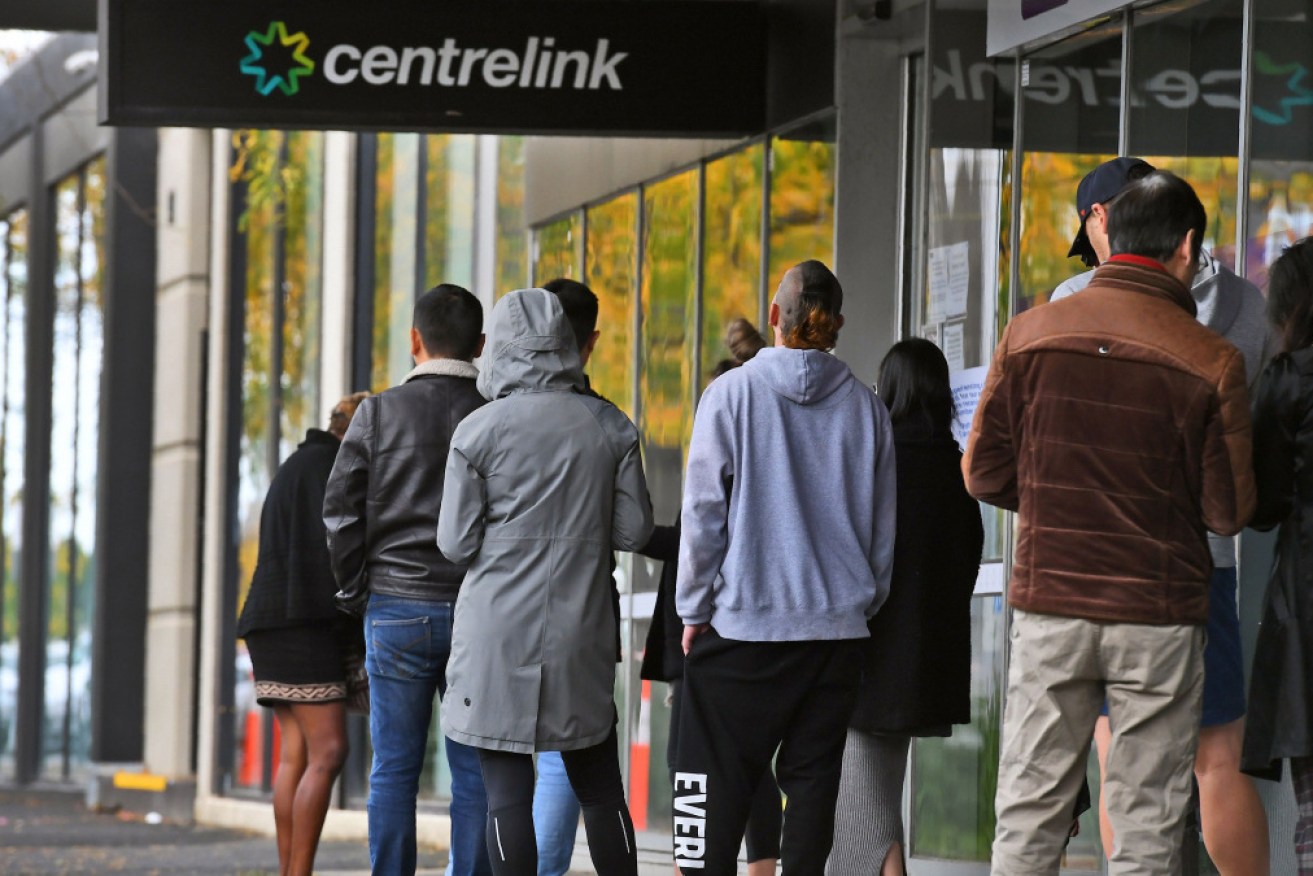Should the Treasurer bring back JobKeeper? We asked five leading economists


Leading economists have called for more support to help workers affected by lockdowns.
Against the worsening outbreak in New South Wales, there are growing calls for the Morrison government to bring back JobKeeper to safeguard workers and businesses alike.
But Treasurer Josh Frydenberg has ruled out reviving the scheme and is instead considering other forms of financial support for the economy.
The New Daily asked five economists whether he made the right call.
Angela Jackson, Equity Economics
 While the lockdowns are part of a public health response that benefits us all, the impacts are not equally felt.
While the lockdowns are part of a public health response that benefits us all, the impacts are not equally felt.
There is a role for government to support those who are disproportionally impacted due to their location, the industry they work in and the nature of their employment.
Current government support is not adequate for an extended lockdown that Sydney now faces. Not only will this cause unnecessary hardship, it will hinder the economic recovery.
It should be noted that if Australia had an adequate social safety net, we would not need to contemplate what type of bespoke policy response was required to support the people of Sydney and its economy through this latest lockdown.
JobKeeper provided many Australians with support through 2020, however it was a poorly targeted scheme that delivered windfall gains to many businesses.
It should not be repeated.
Instead, the government should look at providing increased support to those who cannot work during the lockdowns, including those on social security payments, and targeted support for businesses in the most impacted industries and local areas, including hospitality and tourism.
Payments should ideally replace income at least up to the median wage, to reflect that this is not a short-term ‘disaster’ that households can be expected to absorb.
This increased support and expanded eligibility will help those impacted, but also the economic recovery when the lockdown restrictions are lifted.
Angela Jackson is the lead economist at Equity Economics
Brendan Coates, Grattan Institute
 Sydney’s lockdown has passed the four-week mark and there’s little prospect of it ending soon.
Sydney’s lockdown has passed the four-week mark and there’s little prospect of it ending soon.
Many firms and business face a bleak end to winter, and well beyond.
The federal government now needs to do more to help them make it safely to the other side.
The government’s disaster relief payments announced to date are inadequate for an extended lockdown.
The current $600-a-week disaster payment covers just over half the wage of the median worker.
The payment should be increased to $750 per week, the same level as the original JobKeeper, or about two-thirds of the median worker’s wage.
The government should also reintroduce the JobSeeker coronavirus supplement, so that people on JobSeeker get an extra $75 per week on top of the normal $310 payment.
There’s no prospect of unemployed Sydneysiders looking for work or expanding their hours in lockdown.
But the supplement should be available to all unemployed Australians, because that would provide an important fiscal boost to the economy, helping offset the economic hit to other states from the long Sydney lockdown.
Sydney businesses also need more support to make it through. It’s unreasonable to expect businesses to wear on their own balance sheets the cost of government-imposed lockdowns.
The JobSaver cash-flow boost covering 40 per cent of payroll costs, up to a maximum of $10,000 a week, is a good start, but is clearly inadequate for such an extended lockdown.
Doubling the share of payroll costs covered by JobSaver to at least 80 per cent of payroll and expanding it to cover larger firms, again on the condition that firms retain all existing staff, would help businesses to reboot once lockdowns end.
And the NSW government should offer Sydney firms desperately needed rent relief by offering to cover half the cost of any rent forgiven by landlords.
These supports can get us through the next couple of months. But the federal government should put in place a plan to deal with further lockdowns in the months ahead.
Whether that should be by reinstating JobKeeper, or expanding existing supports, is less important that the quantum of support that is provided.
What Australians in every and state and territory need most is certainty that government will support them through whatever comes next.
With Australia’s vaccine rollout well behind schedule and the Delta variant raising the stakes, we face an uncertain few months ahead.
Brendan Coates is economic policy program director at Grattan Institute
Steven Hamilton, Blueprint Institute
 Given the Sydney lockdown is likely to run for several months, there is clearly a need for additional support, both for businesses and people, over and above what is already being provided.
Given the Sydney lockdown is likely to run for several months, there is clearly a need for additional support, both for businesses and people, over and above what is already being provided.Saul Eslake, Corinna Economic Advisory
 I can understand why the government is hesitant about bringing back JobKeeper.
I can understand why the government is hesitant about bringing back JobKeeper.
Although they won’t say so publicly, they must be aware that it was more generous, especially to big businesses, than it needed to be, and it was a lot of money.
It did what it was meant to do and probably even more than it was meant to do, but a lot of it ended up in the profits, dividends or executive pay packets of major ASX-listed companies.
If I were advising them, I’d say they should provide more generous assistance to those who are already on some kind of income support and, as a result, are disqualified from the additional assistance that the government is providing through the COVID-19 disaster relief payment.
The current eligibility criteria is unnecessarily mean, and the distinction between whether you’ve lost 20 hours or more hours of work is too arbitrary. There are some big holes that need to be patched up.
That doesn’t amount to a reintroduction of JobKeeper, nor necessarily to a reinstitution of the coronavirus supplement.
But attention needs to be given not only to people who are losing jobs but people who don’t have jobs in the first place and are disadvantaged by the lockdowns.
Without additional support and if the lockdowns last a long time, the risk is Australia suffers a double dip recession.
If the NSW lockdown goes into the fourth quarter you could easily have two quarters of negative growth.
Saul Eslake is an independent economist who does all of his professional work through the business he founded, Corinna Economic Advisory
Sarah Hunter, BIS Oxford Economics

With more than half of the country currently locked down it is absolutely right that the federal government has stepped in with its COVID disaster payments.
There is an immediate need to support the workers in hospitality, the arts, personal services, and any other sector who cannot work and earn income while tight social distancing restrictions are in place.
The state government grants to businesses are also very welcome; the majority of firms will have fixed costs to pay and will need access to cash flow in order to restart operations once the lockdown is eased.
It’s therefore good news that the supports are broadly equivalent to the JobKeeper program from the last three months of 2020, together with additional grants for businesses.
Indeed, for some workers more support has been offered as those that have been with their employer for less than 12 months are eligible.
But the impact of the payments stretches beyond the immediate relief they provide.
During 2020, many businesses cited the importance of the certainty the JobKeeper payments provided; the system was clearly understood (including the amount that would be received), relatively easy to apply for, and explicitly linked workers and businesses as the payments for individuals came via their employer.
Although technically there is little difference between JobKeeper and the 2020 business grants and the Disaster Payments and 2021 business grants, it remains to be seen whether this is true in practice.
If the federal and state government are able to send the money to individuals and businesses quickly this should alleviate uncertainty over what support will be provided and when.
And the early signs are that this is happening, but it will be important for the funds to continue to flow as other businesses become eligible e.g. those operating in the construction sector.
It will also be crucial to continue to stipulate that support payments are only available if workers remain attached to their employers – international experience has highlighted that when this link is broken, it takes much longer for the labour market to recover as a result of natural frictions in the labour market.
It will also be necessary for further fiscal stimulus to be applied down the track, both in NSW as the state eventually moves out of lockdown and in other parts of the country that are adversely impacted e.g. tourism operators.
We’ve already seen how effective incentive schemes are in getting households to spend – the response to HomeBuilder and the various state hospitality/tourism voucher schemes are a testament to this.
The state and federal governments should consider using these again, targeting them at the sectors that have been most affected by the pandemic.
Conversely, despite the current lockdown, the pipeline of work in the construction sector will keep businesses busy for quite some time; further stimulus here would be a waste, and better spent in other parts of the economy.
Sarah Hunter is the chief economist at BIS Oxford Economics








